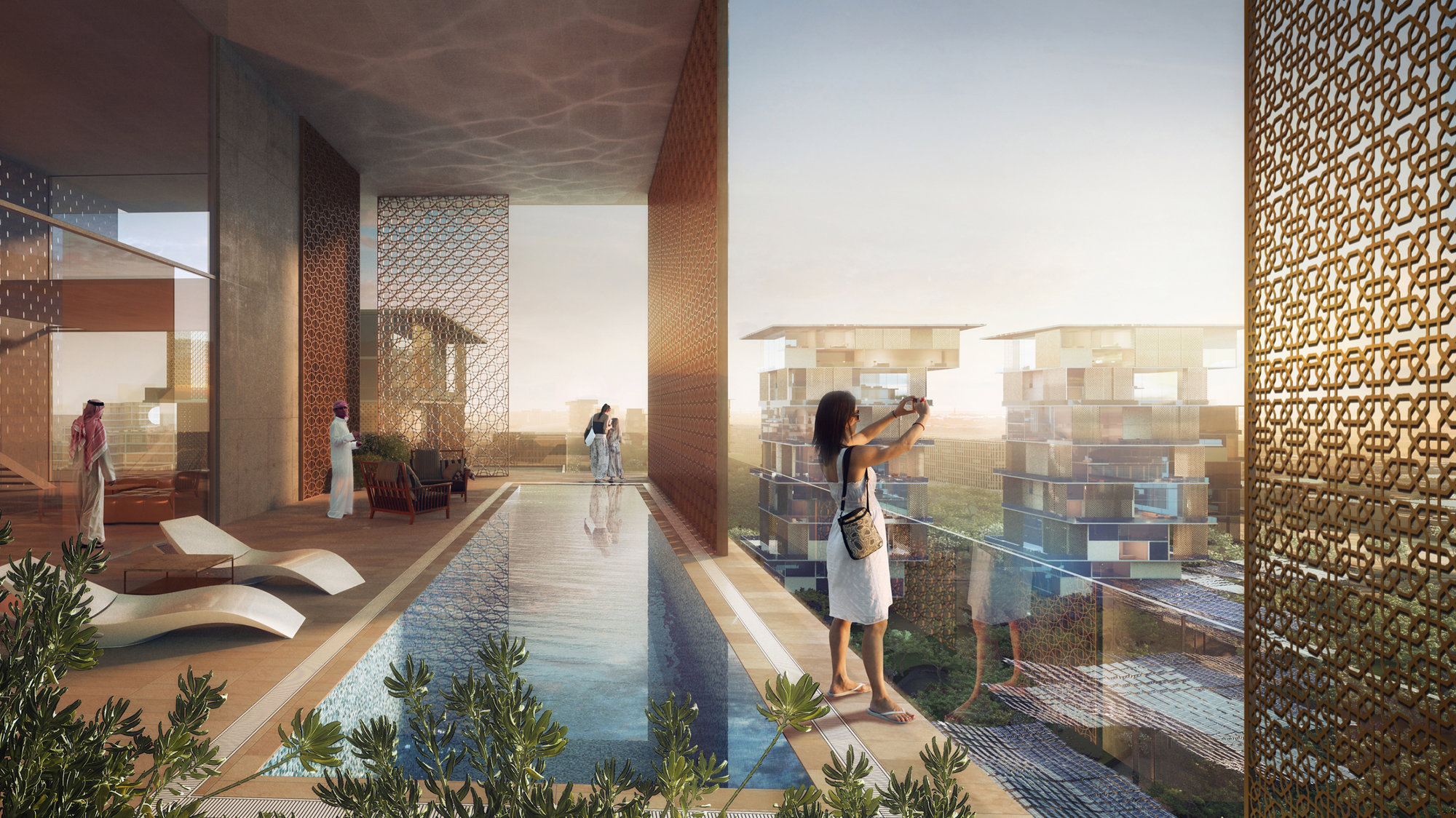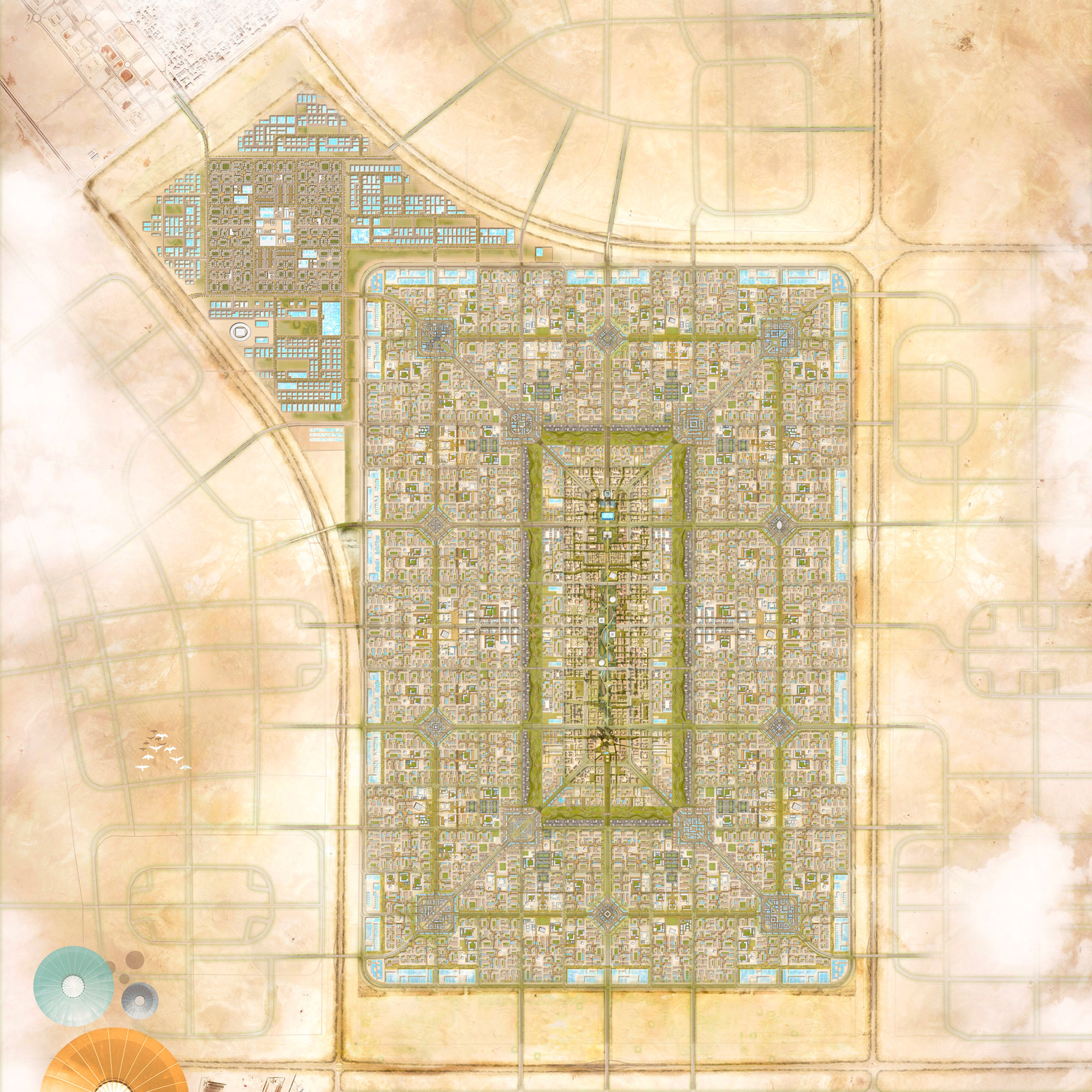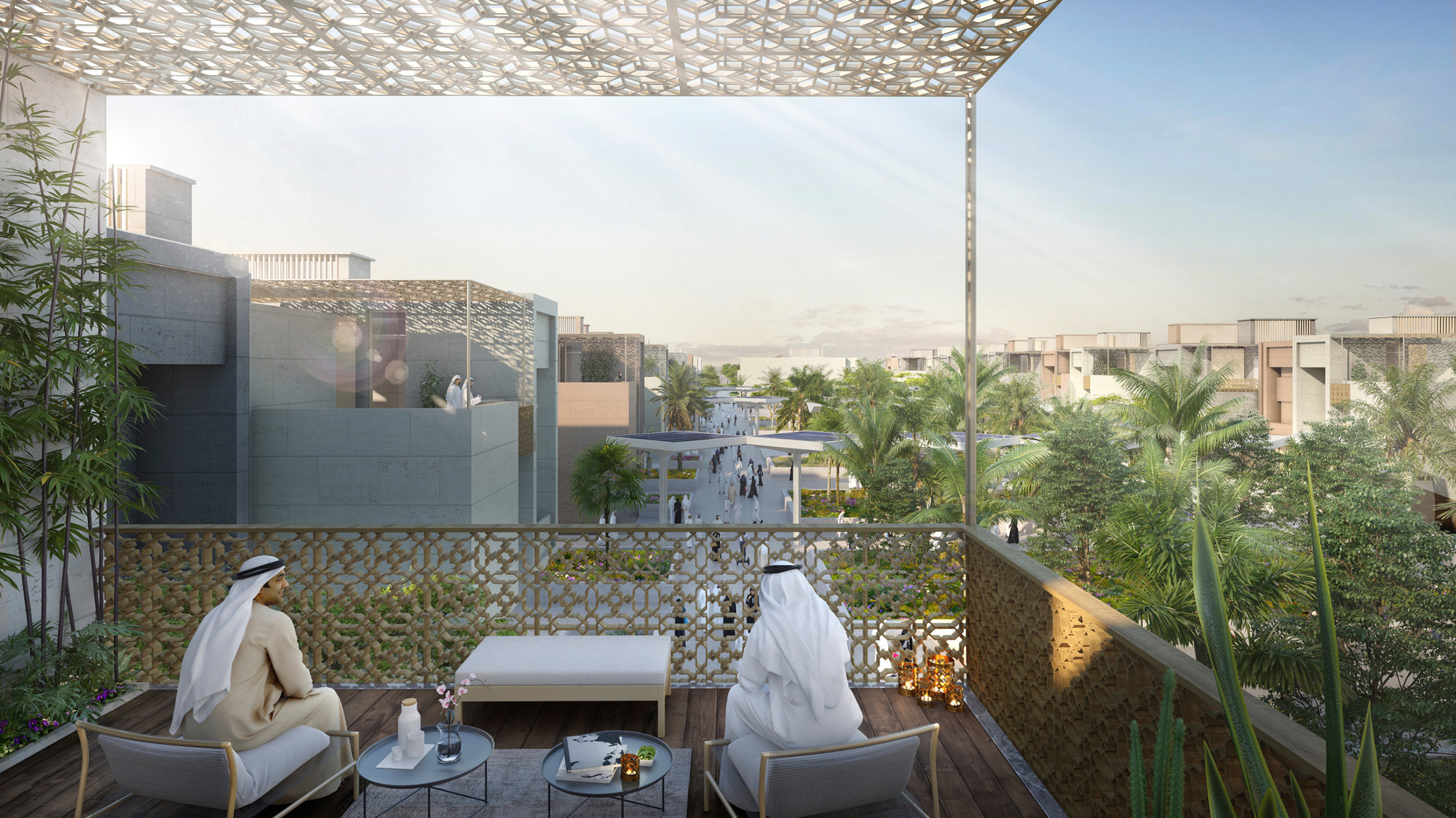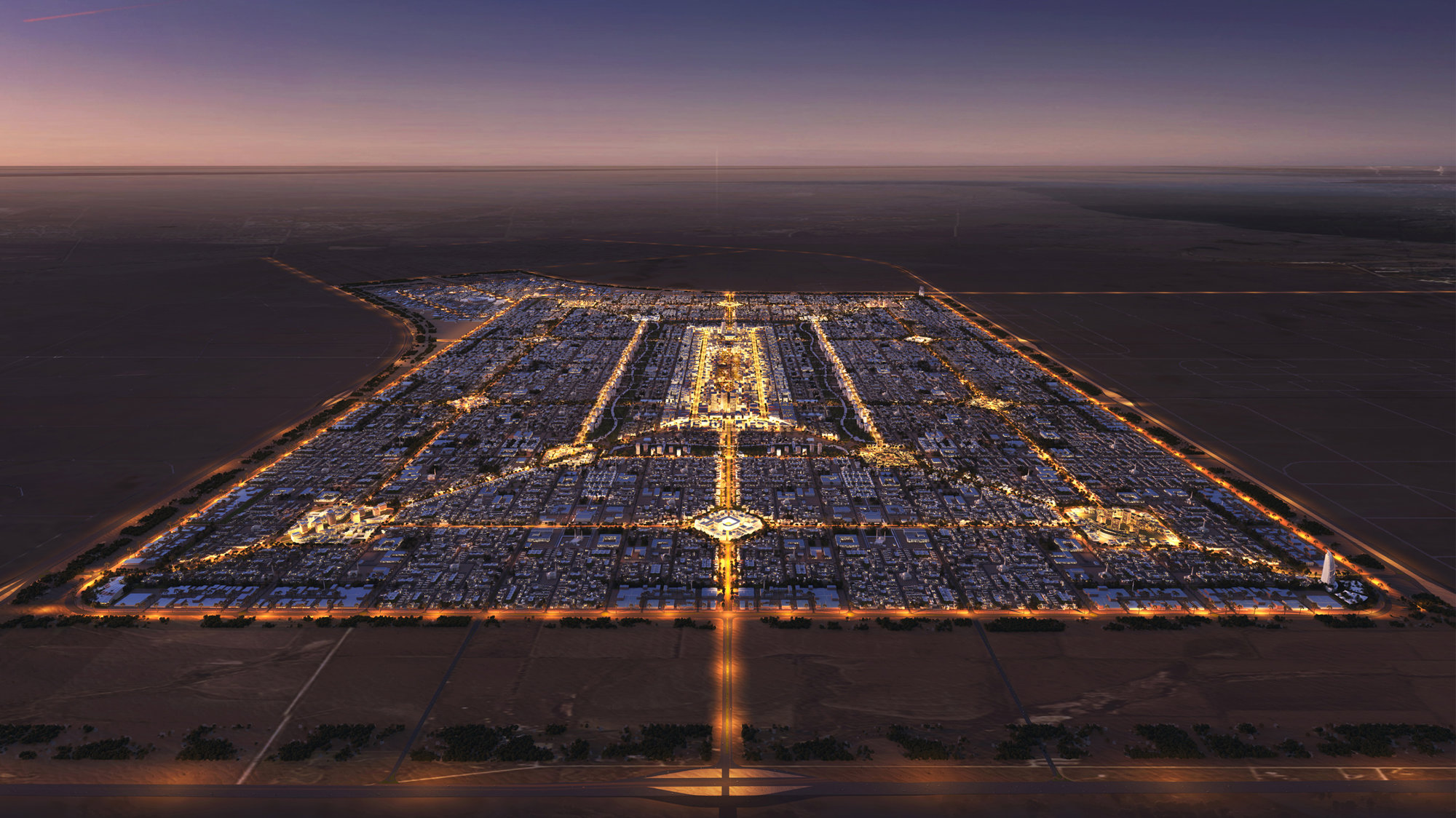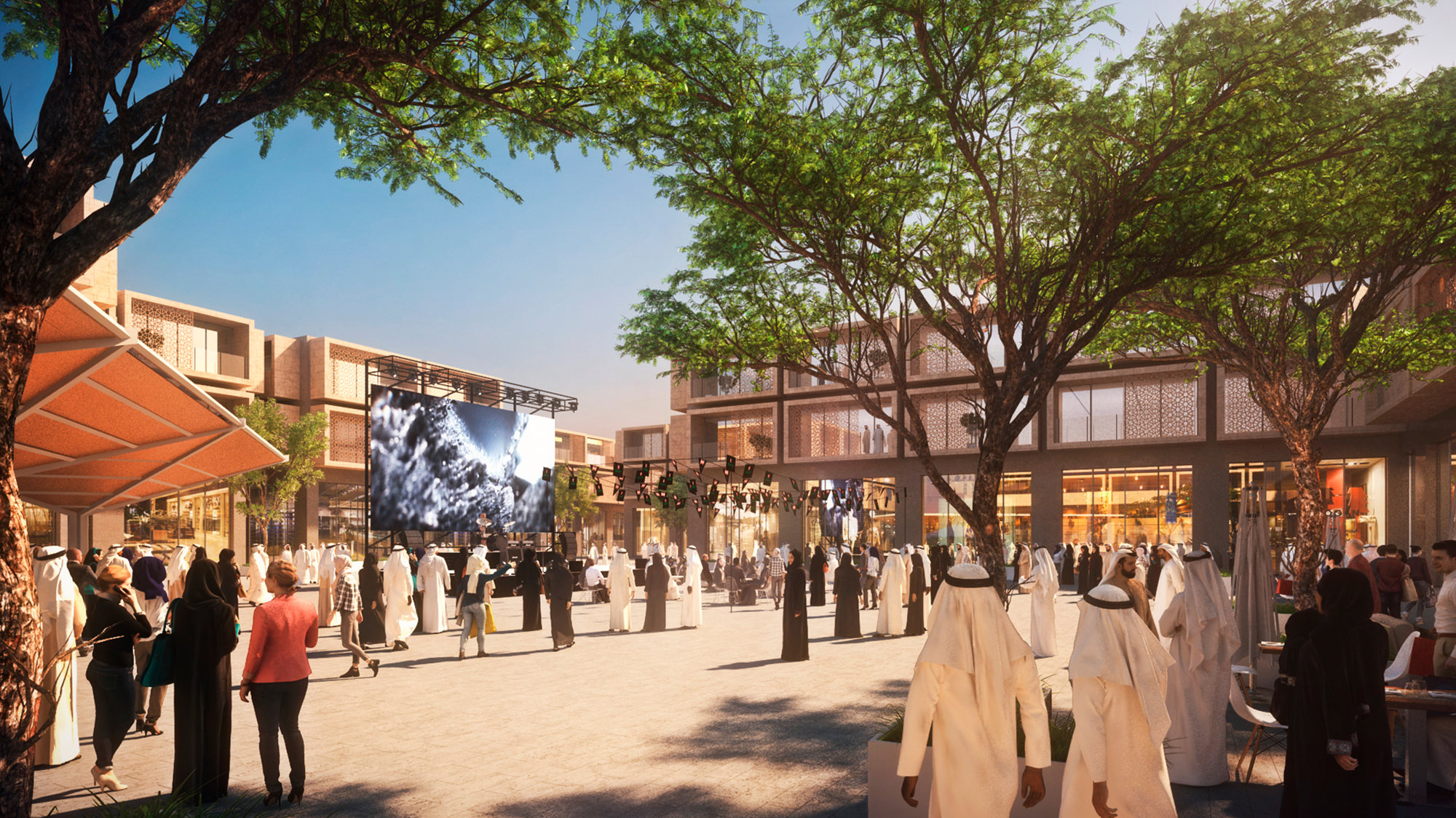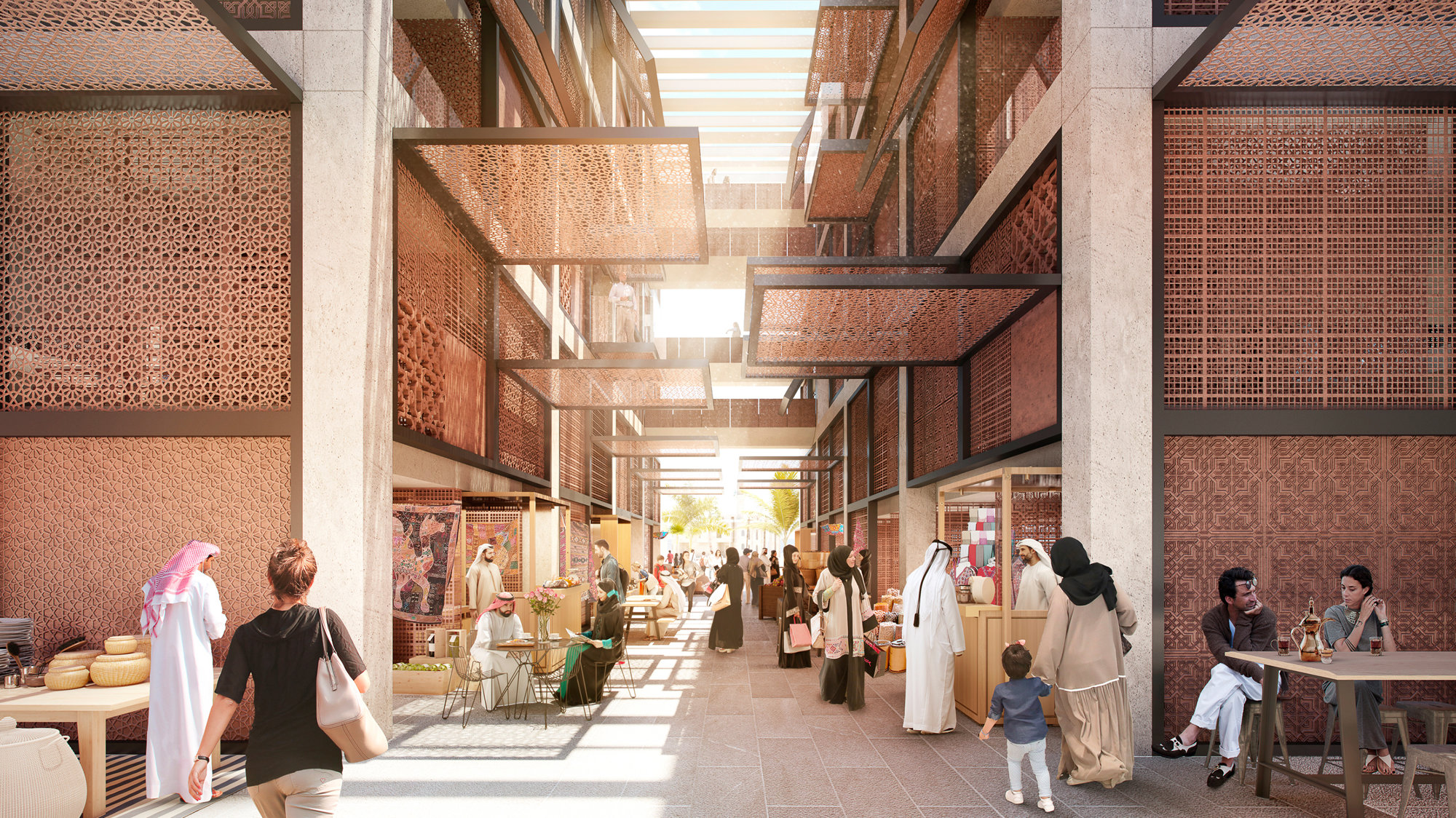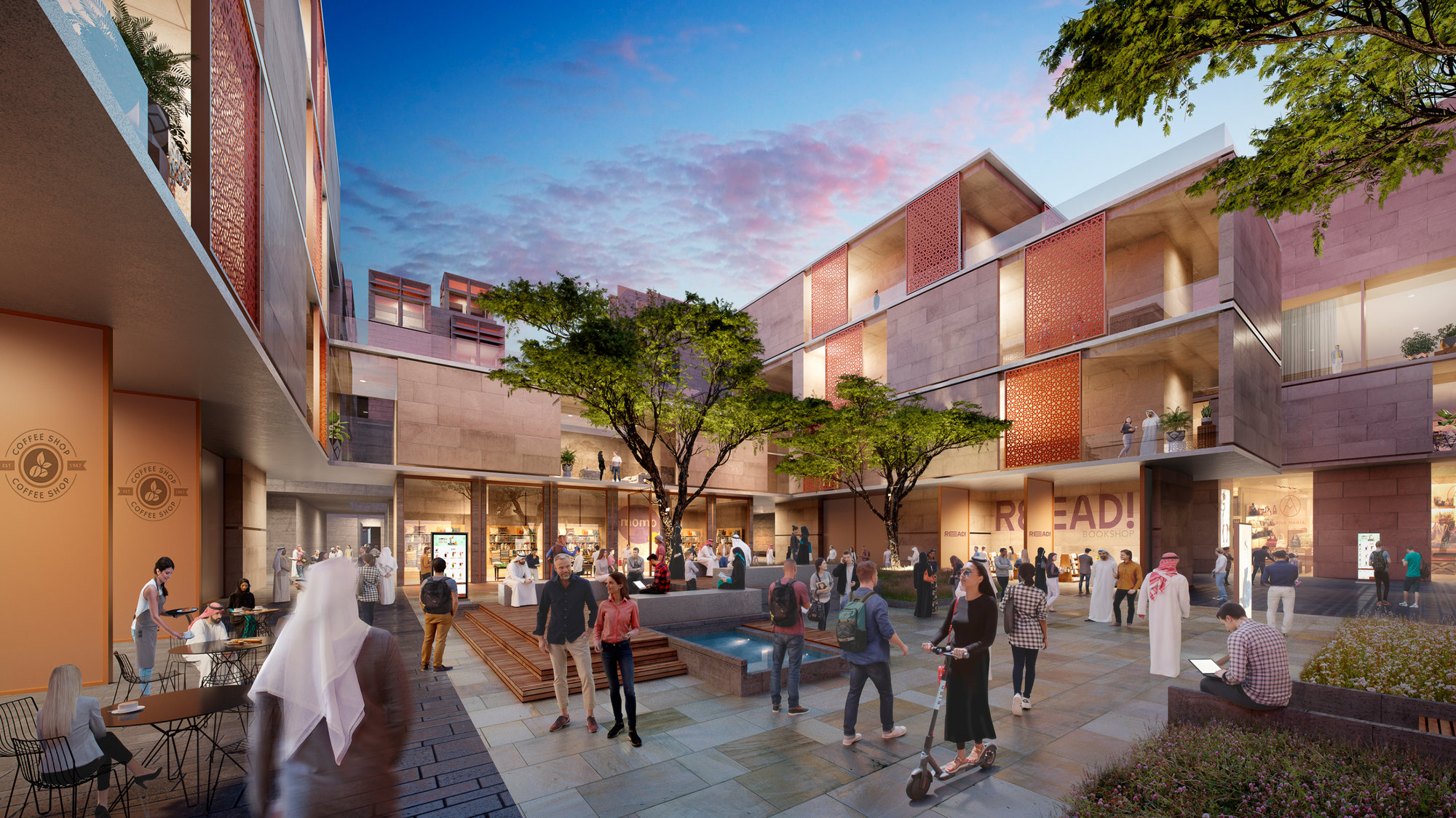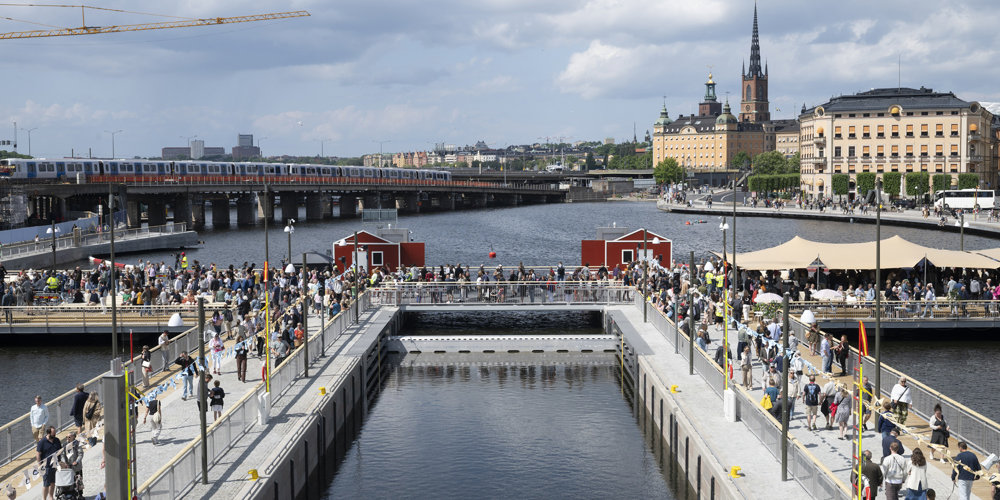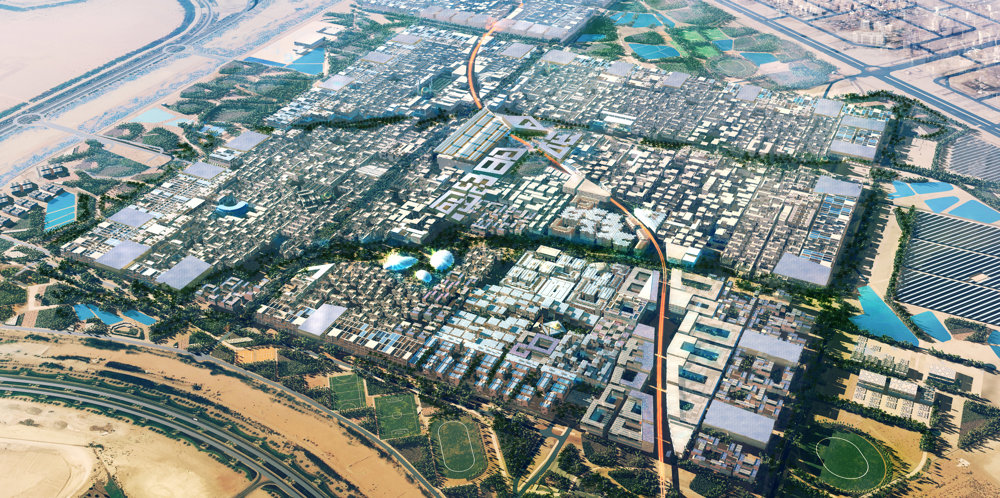Located 80 kilometres south of Kuwait City, South Sabah Al-Ahmad City is set to be the urban core for the country’s southern sub-region. The city will be home to an estimated 280,000 people, while creating another 145,000 jobs in a diverse range of industries including construction, medicine, manufacturing and culture, along with extensive green open spaces and multi-layered public transport systems that promote wellbeing and sustainability.
The 61.5 square-kilometre city is formed of ten neighbourhood clusters arranged around the city’s central business district, and bordered by a ring of light industrial buildings. The central district contains a sports stadium, museum, city university and a major city park, which forms the heart of the masterplan’s landscape strategy. Petal-like green spaces branch off from the city park, running between each of the neighbourhoods to create green urban links throughout the masterplan. The undulating topography of the development has been inspired by the gentle form of sand dunes in the desert.
The practice has also detailed one neighbourhood cluster as a pilot project to showcase a future vision for the city. The villa cluster forms the smallest unit of the masterplan, arranged around a contemporary interpretation of a Farige – a traditional Kuwaiti cul-de-sac. These also function as shaded courtyards, merging traditional living with contemporary urbanism. Several villa clusters together form a community centre, which includes local parks and shops, nursery and kindergarten schools, and local mosques at every 250 metres. A number of communities combine to become a neighbourhood, each with a residential centre featuring a large souk, centres for health, children and the youth, and primary, elementary and secondary schools.
The masterplan offers a range housing typologies, including apartments and patio houses, encouraging high density living with equally high standards of luxury. The modular construction system adopted throughout allows for multiple configurations and ensures high quality buildings, while also contributing to strengthening the construction industry in Kuwait. The pilot neighbourhood cluster will also feature roof-top photovoltaic installations on the industrial buildings surrounding the development, to further strengthen the sustainable credentials of the project. The city also offers opportunities several leisure activities such as desert glamping, e-biking, design galleries and luxury shopping.









